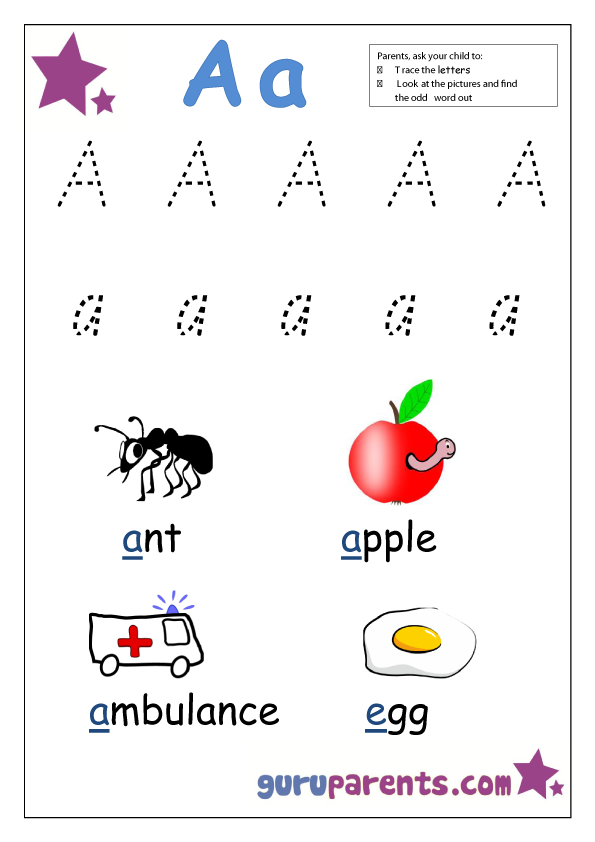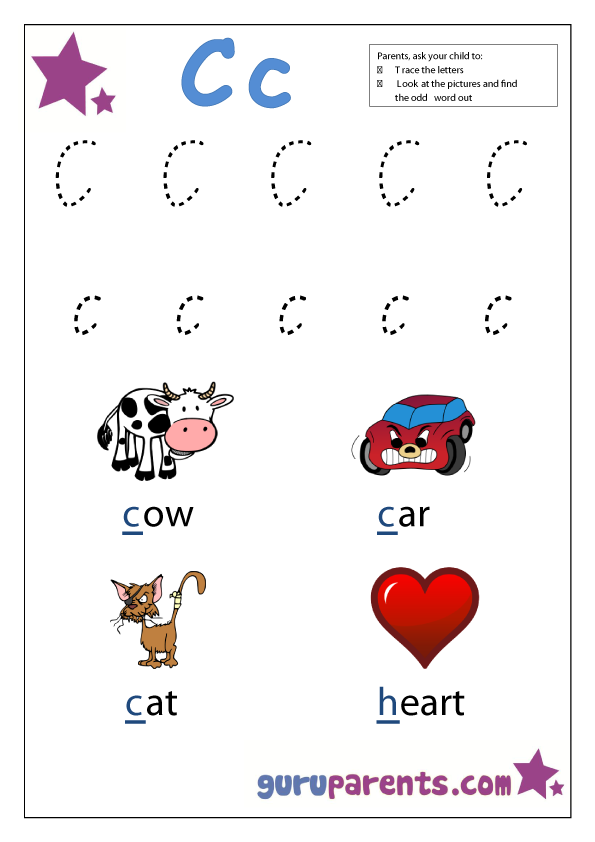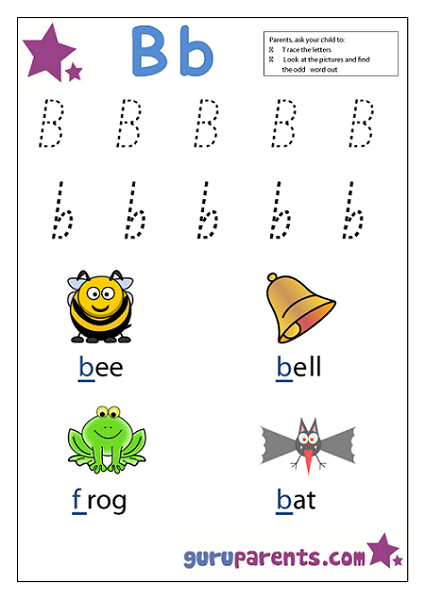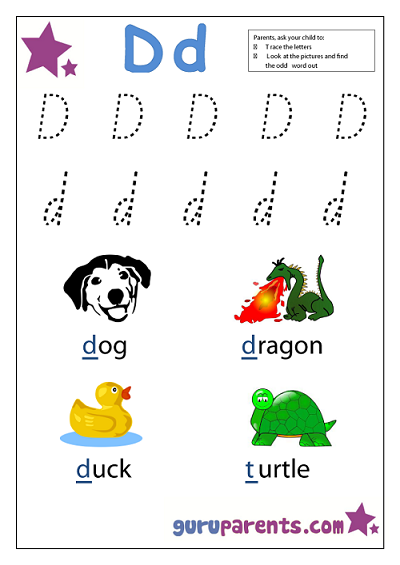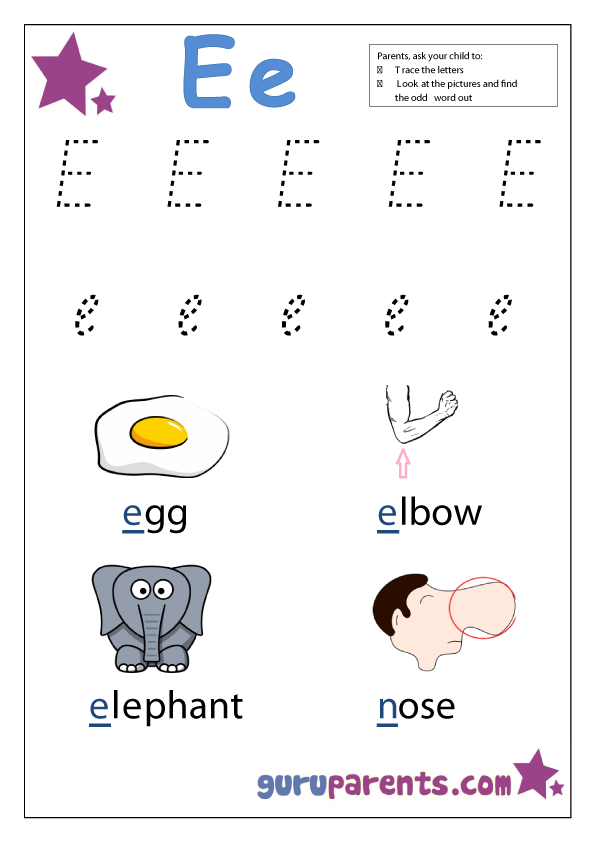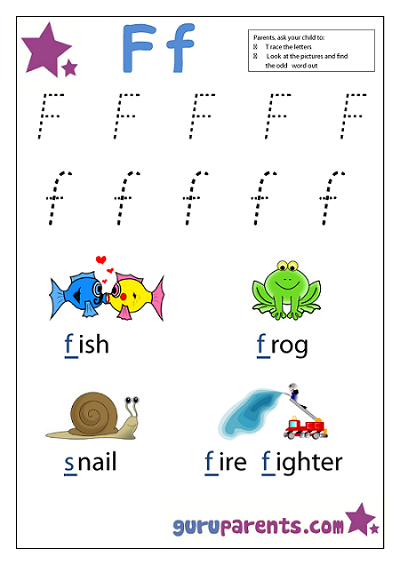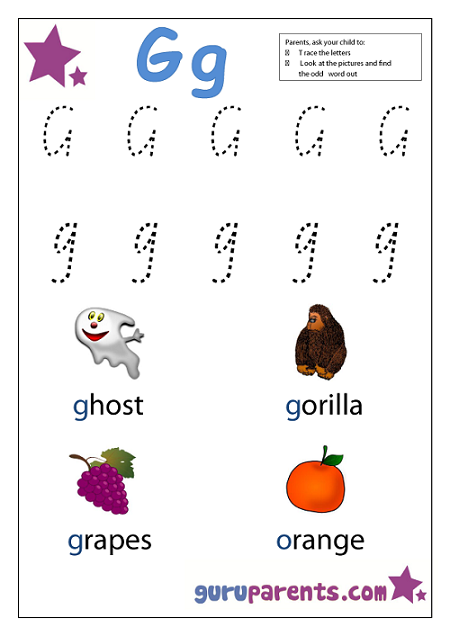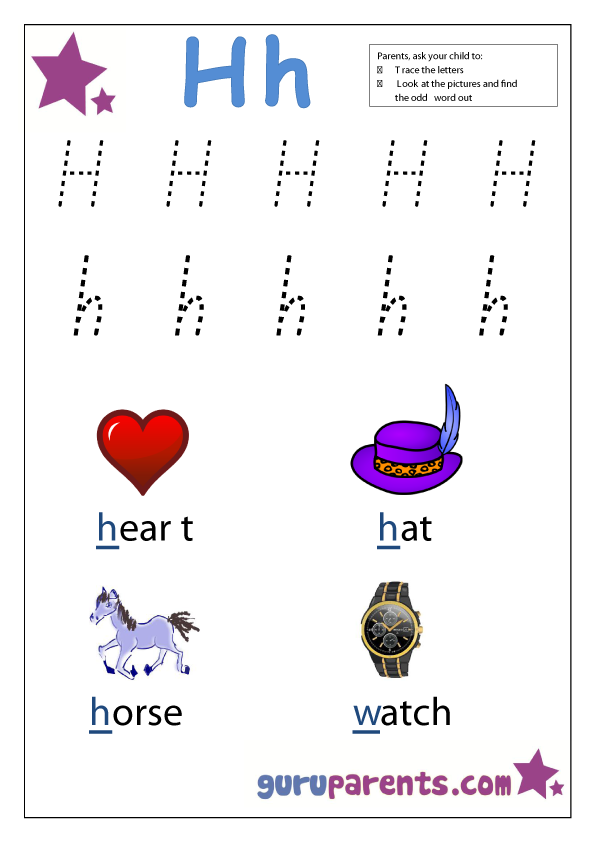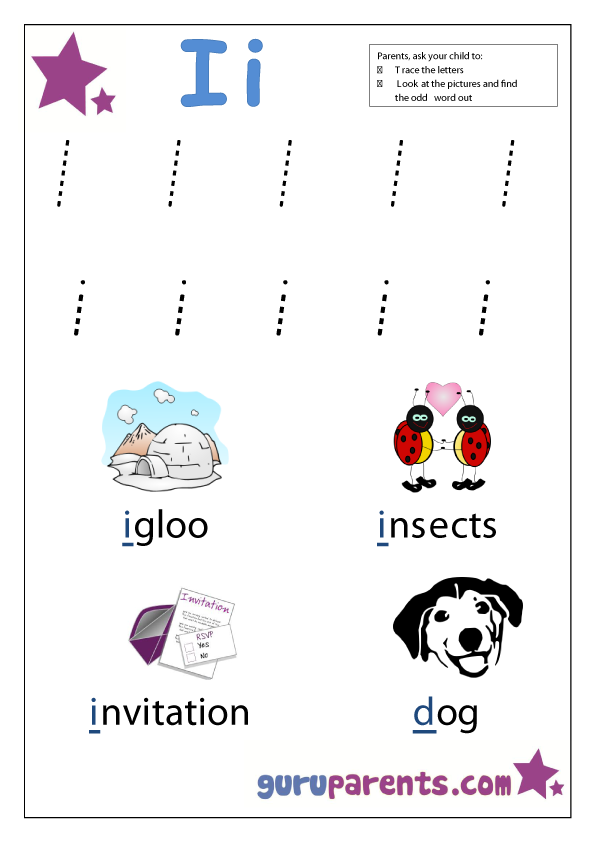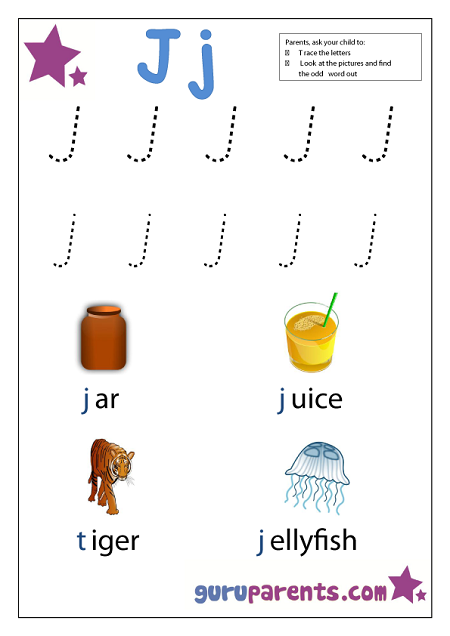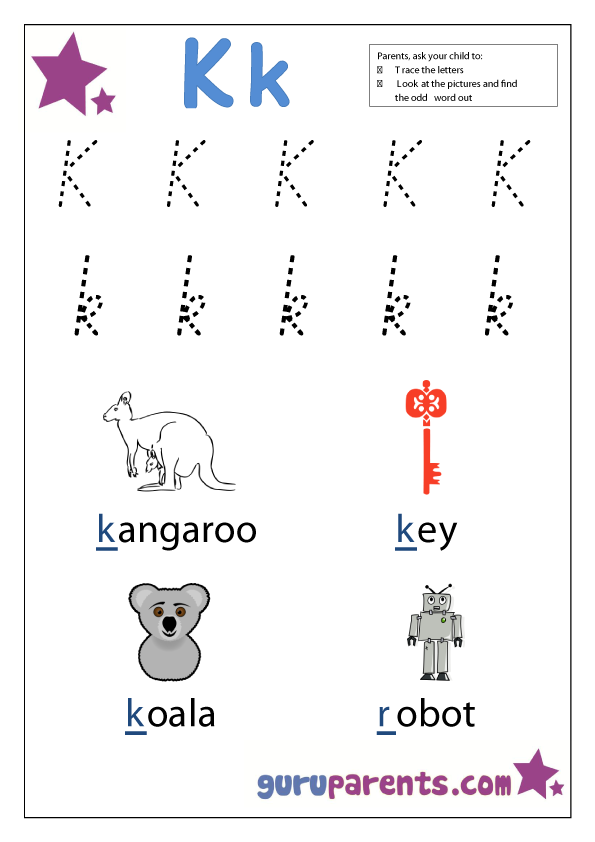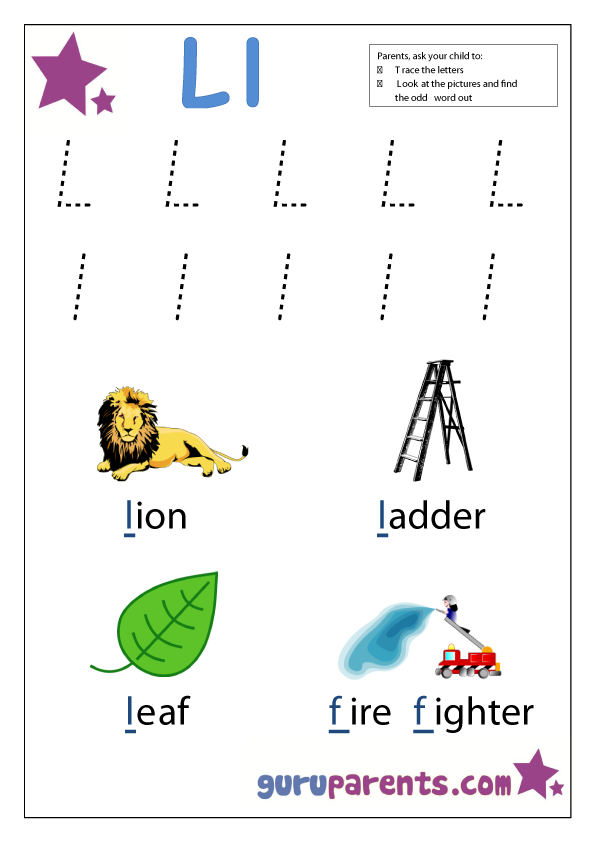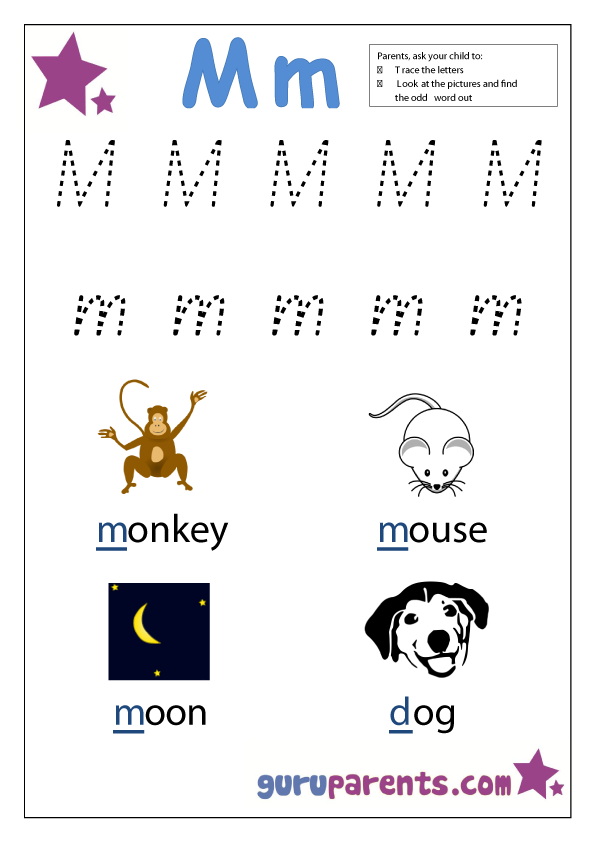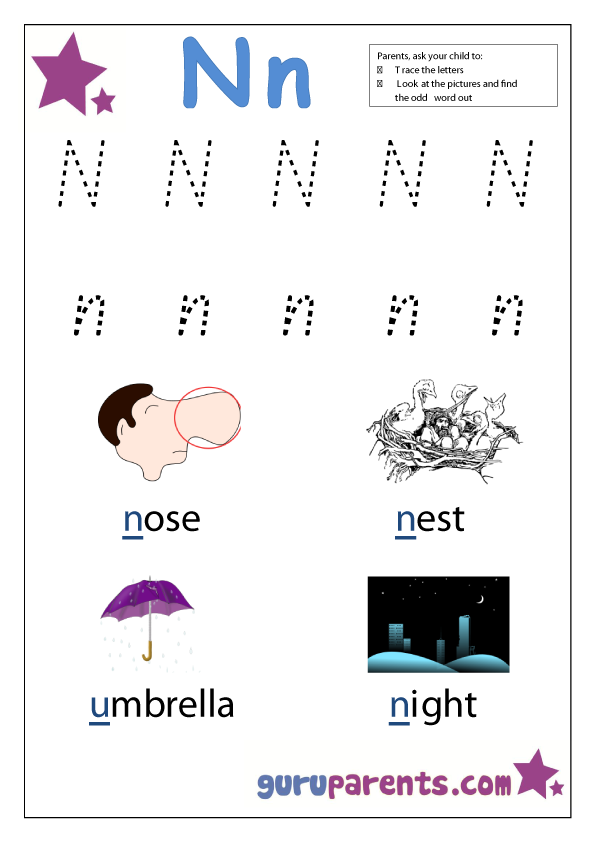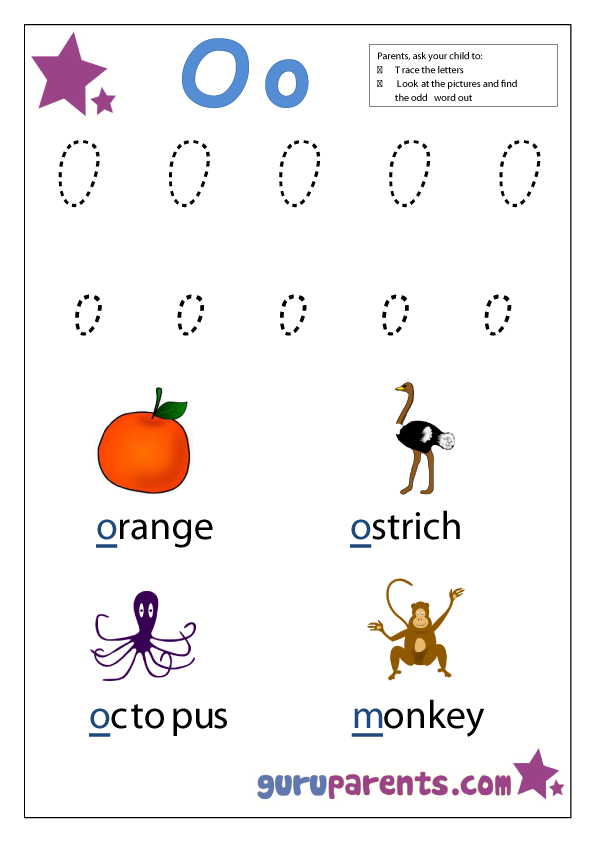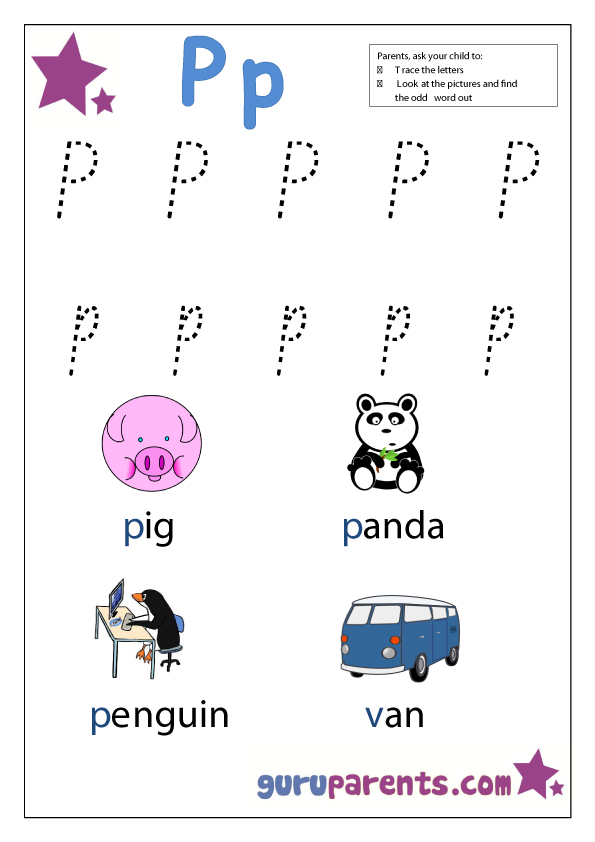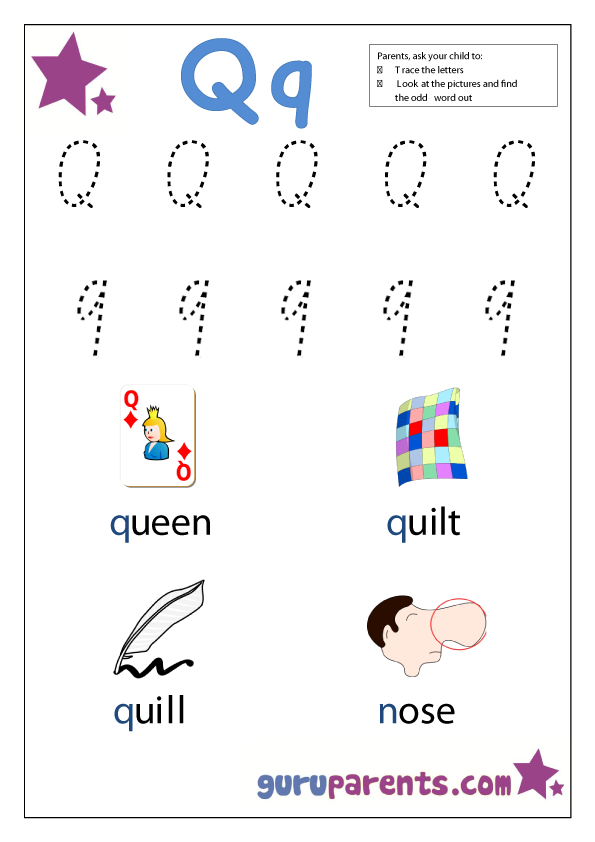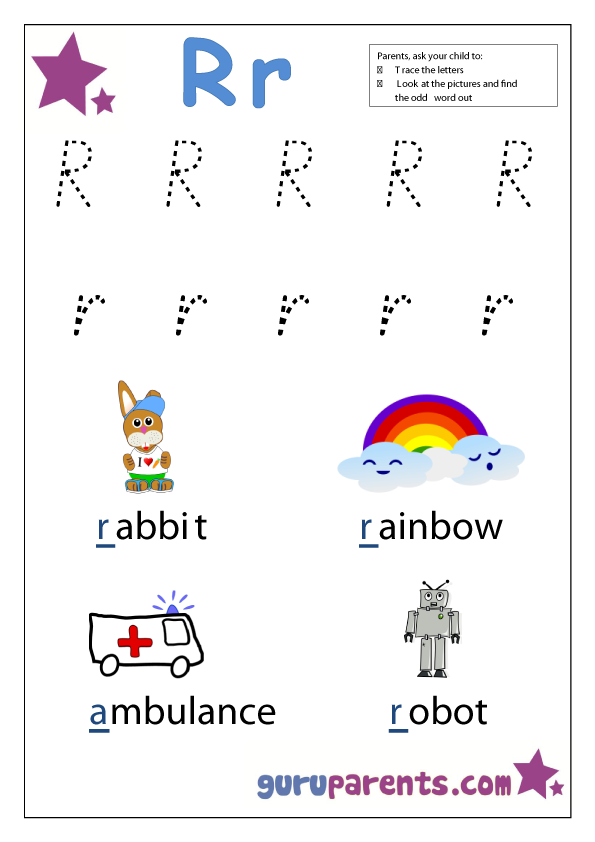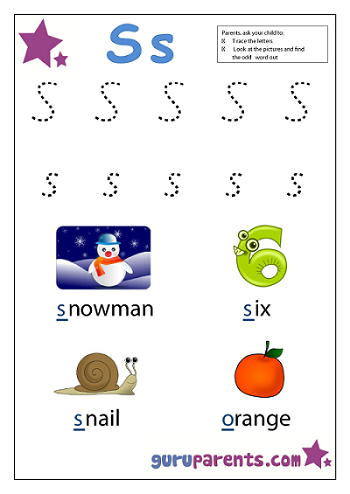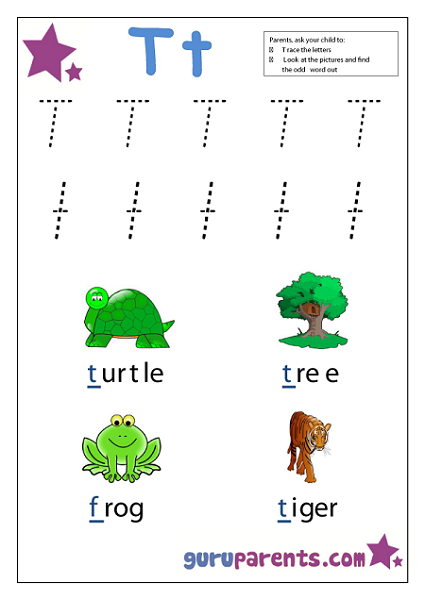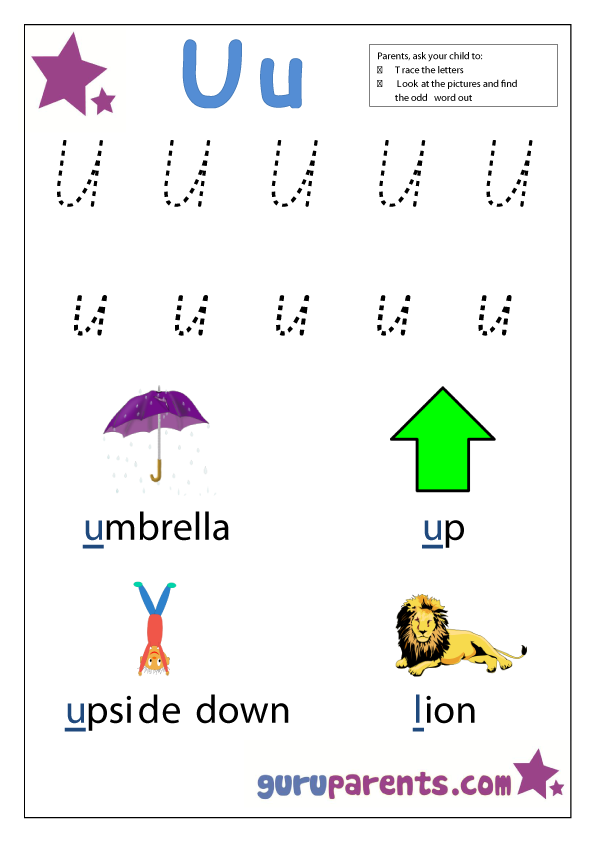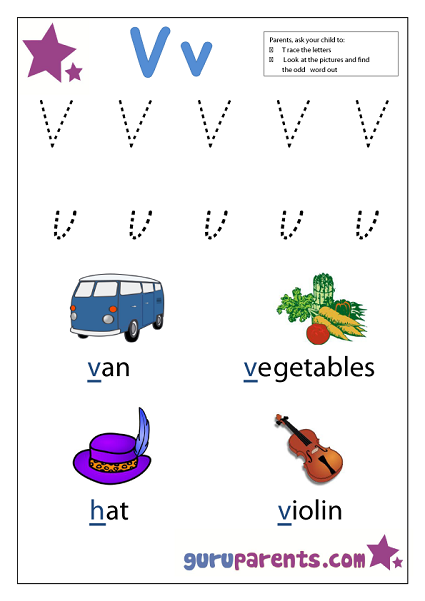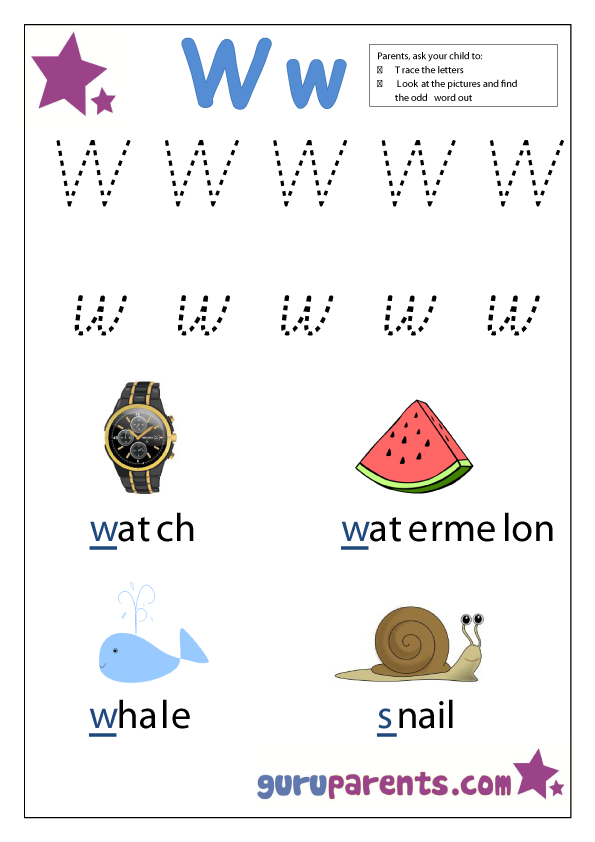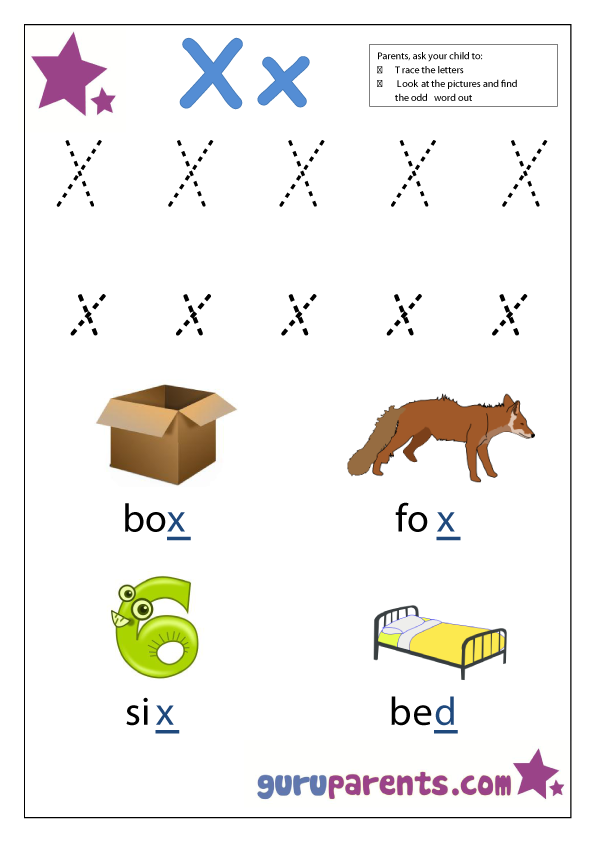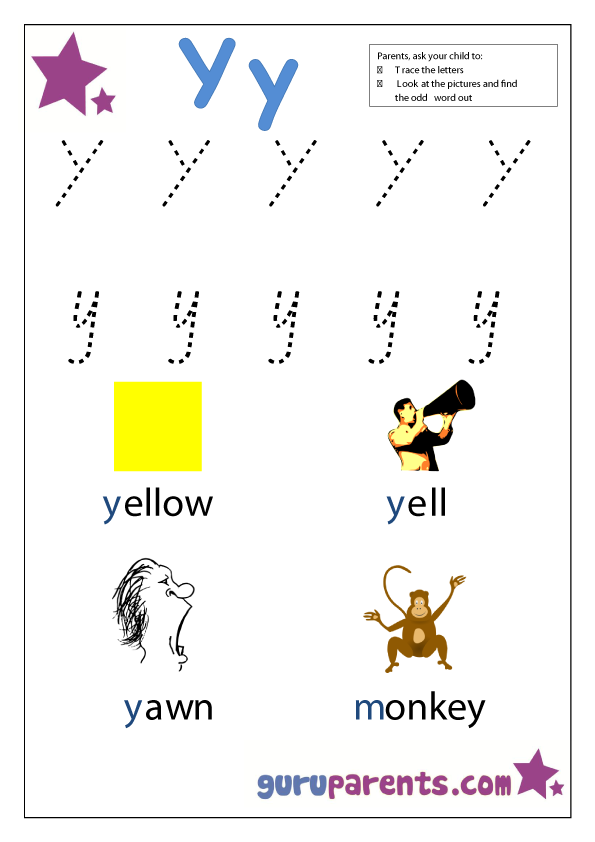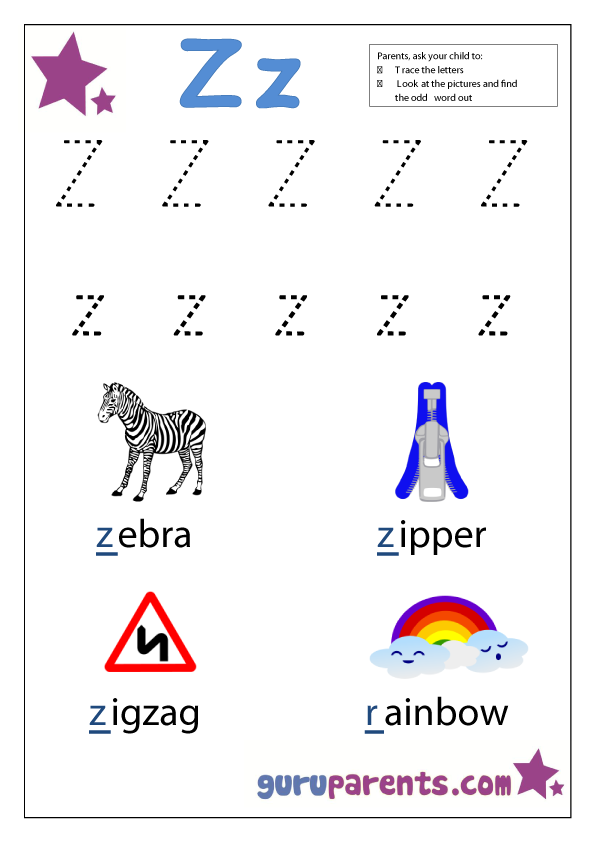Preschool Letter Worksheets
Preschool letter worksheets are a great way to give your child's reading and writing a big boost. We have created one worksheet for each letter of the alphabet - and they are all free for you to download below.Features
Each sheet has the same three features. As an example, here is what you will find on the letter A page (you might like to open it and refer to it as you read):
1. A line of dotted A’s in uppercase for your child to trace over.
2. A similar line of a’s, but in lower case.
3. Four, fun pictures. Three beginning with an a – an ant, an apple, an ambulance and, the odd one out – an egg. Beneath each picture the word is written in large font, with the first letter highlighted.
(The letter x worksheet is a slight exception – in this one we’ve used words that end in an x, rather than begin with one.)
How to use
The tracing of the letters is obviously pretty straightforward. Show your child the right way to form the letter and do a couple yourself before letting them have a try.
Then move on to the pictures. Your goal here is for your child to learn the sound that the letter makes and understand that it is the same sound at the start of three of the words shown in the pictures.
If your child is still quite young, it may be too hard for them to work out which picture is the odd one out. If so, that’s fine – just focus on the other three pictures.
Why we think our preschool letter worksheets are the best
Virtually any preschool letter worksheets are worthwhile and will help get your son or daughter off to a good start in reading and writing. That being said, here are the reasons we recommend you definitely include ours:
1. We only use words in which the basic, simple sounds of the letter appear. For example, our letter I sheet features ‘igloo, insects and invitation’. ‘I’ actually doesn’t begin many simple words with this sound – so on a lot of other preschool letter worksheets you’ll find words like ‘ice’ being used, in which ‘I’ is pronounced very differently. We believe in simplicity and giving children one thing to learn at a time.
2. Our pictures are fun, colorful and occasionally a little bit silly – but are still clear and obvious.
3. Our odd picture out is never one of the first two pictures – it will always be either the third or the fourth one. Again, this is to make sure we don’t confuse young minds.
Conclusion
If your child begins school with an ability to write each letter and to know the sound it makes and understand how this sound can be used to begin words, well…wow! They will be well in advance of most other kids and ideally positioned to learn to read.

